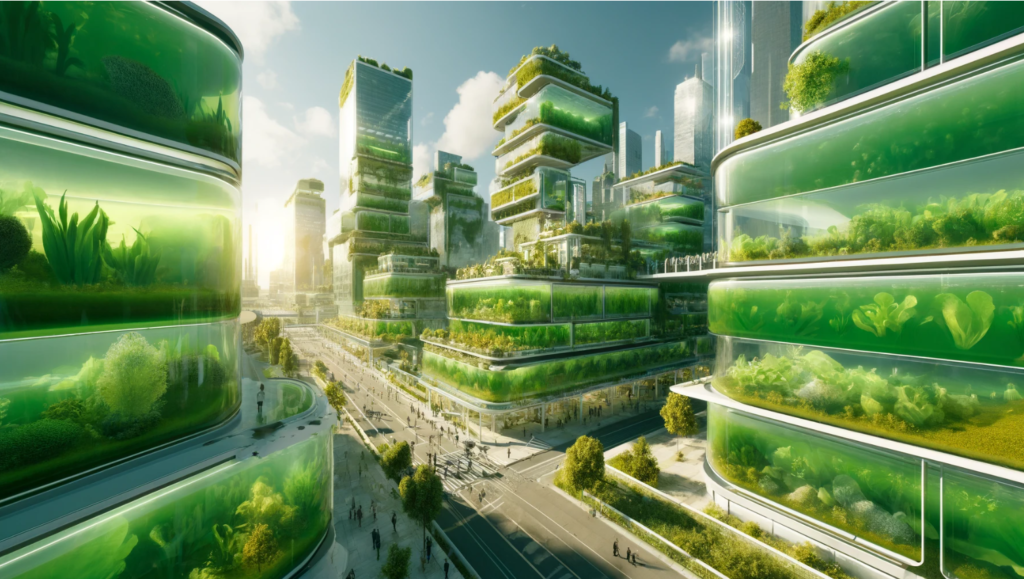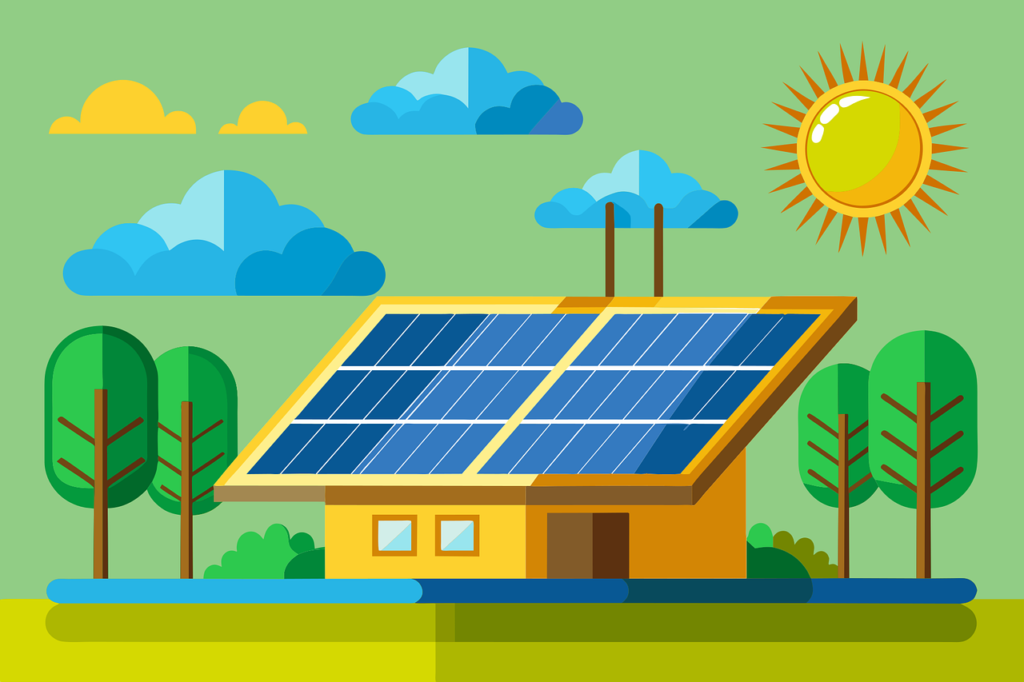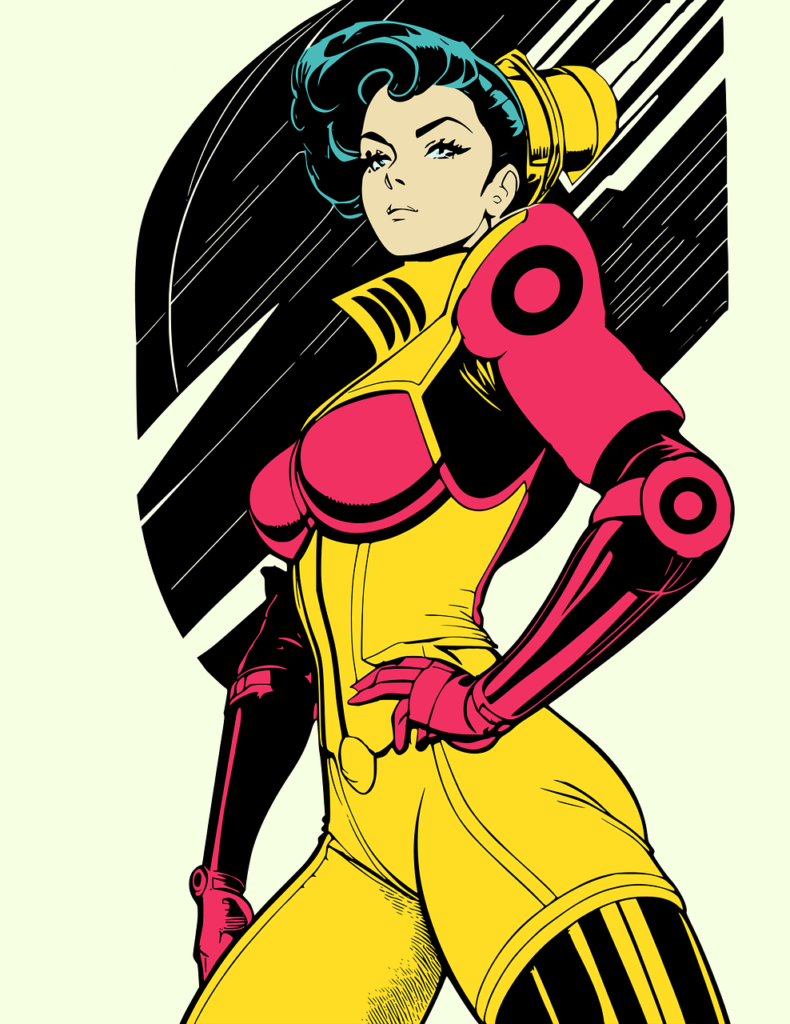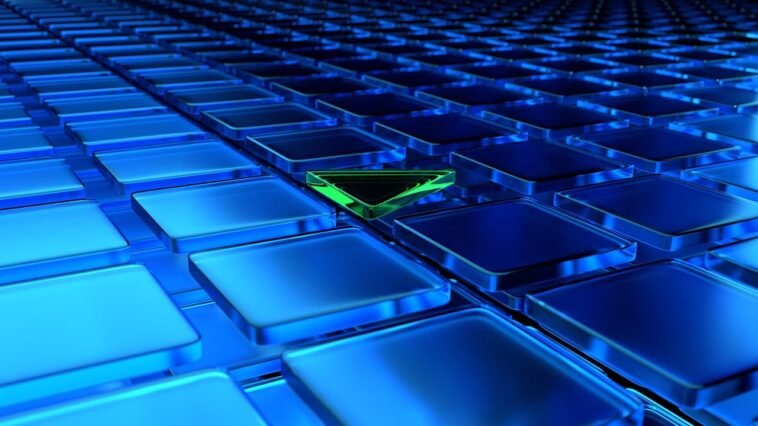Algaepunk is a term created and defined by Elliott Killian. The definition of algaepunk is:
Algaepunk is a concept that envisions the widespread use of algae-growing tanks on almost every sunlit surface. The algae cultivated in these tanks are then transformed into a variety of products that benefit both people and the planet
Elliott Killian
You might be saying: punk. I have heard of other punk terms. Cyberpunk, Solarpunk. How is Algaepunk different?
Comparing Algaepunk, Solarpunk, and Cyberpunk: Visions of the Future
In the realm of speculative fiction, three distinct subgenres—Algaepunk, Solarpunk, and Cyberpunk—offer unique visions of the future. Each presents a different take on technology, society, and the environment. Let’s dive into the core elements of these genres, their aesthetics, and their potential impact on our world.
Algaepunk: A Green Revolution
What is Algaepunk?
Imagine a world where every sunlit surface is covered with thriving algae. This is the essence of Algaepunk, a visionary concept that integrates algae into everyday life to create a sustainable and eco-friendly future. Algae-growing tanks adorn buildings, sidewalks, and rooftops, transforming them into green, living landscapes.
Key Features:
- Food: Algae is a rich source of nutrition, offering proteins, vitamins, and minerals.
- Fuel: Algae can be processed into biofuels, providing a renewable energy source.
- Fiber: Algae fibers can be used to create sustainable textiles.
- Carbon Sequestration: Converting algae into biochar allows for long-term carbon storage, helping to combat climate change.

Practical Applications:
- Urban Agriculture: Algae tanks can produce food locally, reducing the carbon footprint associated with food transportation.
- Renewable Energy: Algae-derived biofuels can reduce reliance on fossil fuels.
- Sustainable Textiles: Algae fibers offer an eco-friendly alternative to traditional fabrics.
- Carbon Capture: Biochar from algae can sequester carbon, mitigating global warming.
Aesthetic Appeal:
Algaepunk’s visual appeal lies in its green, futuristic landscapes. Glass-covered algae tanks create a striking aesthetic while improving air quality and reducing urban heat islands.
Challenges and Opportunities:
- Challenges: Developing scalable algae cultivation systems, ensuring proper maintenance, and gaining public acceptance.
- Opportunities: Innovation in biotechnology and sustainable architecture, significant environmental impact, and economic benefits through new industries and job creation.
Solarpunk: A Bright, Sustainable Future
What is Solarpunk?
Solarpunk envisions a sustainable future where humanity lives in harmony with nature. It emphasizes renewable energy, particularly solar power, and community-driven solutions to environmental and social challenges. Solarpunk is optimistic and rejects the notion of climate doomerism.
Key Features:
- Sustainability: Focuses on renewable energy sources, especially solar power.
- Community: Emphasizes social collectivism and community-driven solutions.
- Art and Aesthetics: Combines Bohemian style with environmentalism, creating beautiful and practical designs.

Practical Applications:
- Green Architecture: Buildings with integrated solar panels and green roofs.
- Community Projects: Urban gardens, shared resources, and local renewable energy projects.
- Art and Culture: Artistic expressions that promote environmental awareness and community values.
Aesthetic Appeal:
Solarpunk’s aesthetic is vibrant and hopeful, with lush greenery, bright colors, and innovative designs that blend technology with nature. It promotes an inspiring vision of cities that are both beautiful and sustainable.
Challenges and Opportunities:
- Challenges: Implementing widespread renewable energy systems, fostering community cooperation, and overcoming economic barriers.
- Opportunities: Advancing renewable technologies, enhancing community resilience, and creating a culture of sustainability.
Cyberpunk: A High-Tech Dystopia
What is Cyberpunk?
Cyberpunk is a subgenre of science fiction set in a dystopian future where advanced technology coexists with societal collapse. It features high-tech innovations, such as artificial intelligence and cybernetic enhancements, juxtaposed with a gritty, decaying urban environment.
Key Features:
- High Tech: Advanced technologies, including AI, cybernetics, and virtual realities.
- Dystopia: Societal decay, corruption, and corporate dominance.
- Marginalized Characters: Focus on alienated, anti-establishment protagonists.

Practical Applications:
- Technology: Exploration of the impact of advanced technology on society and individuals.
- Social Commentary: Critique of corporate control, social inequality, and the loss of privacy.
- Narrative and Art: Stories and visuals that highlight the dark side of technological advancement.
Aesthetic Appeal:
Cyberpunk’s aesthetic is characterized by neon lights, dark alleyways, and a blend of high-tech and low-life. It presents a stark contrast between the gleaming, high-tech corporate towers and the grimy, impoverished streets below.
Challenges and Opportunities:
- Challenges: Addressing the ethical implications of technological advancements and societal decay.
- Opportunities: Exploring new technologies, engaging in social critique, and creating thought-provoking narratives.
Comparing Algaepunk, Solarpunk, and Cyberpunk Conclusion
Algaepunk, Solarpunk, and Cyberpunk each offer distinct visions of the future, reflecting different attitudes toward technology, society, and the environment. Algaepunk envisions a harmonious integration of nature and technology to create a sustainable future. Solarpunk focuses on community-driven solutions and renewable energy to build a brighter, more hopeful world. Cyberpunk, on the other hand, explores the darker side of technological progress and societal decay.
Each genre provides valuable insights and inspiration, encouraging us to think critically about the direction our world is heading and the choices we make today. Whether we aspire to the green utopia of Algaepunk, the sustainable harmony of Solarpunk, or seek to avoid the dystopian pitfalls of Cyberpunk, these visions can guide us toward a future that balances technological advancement with social and environmental well-being.


